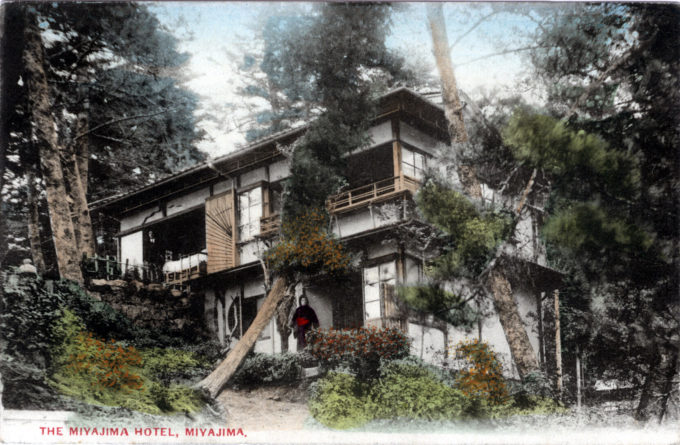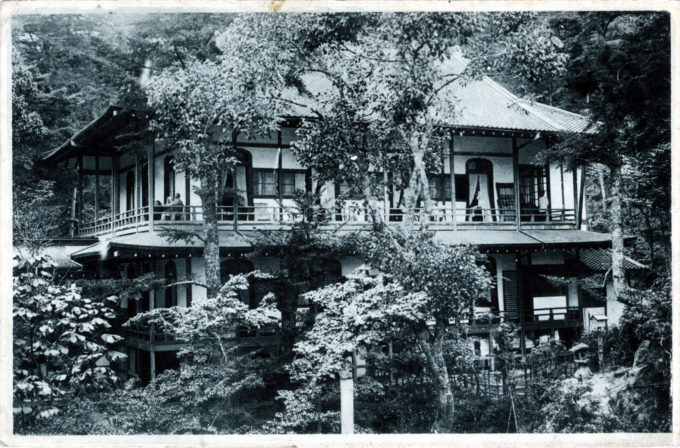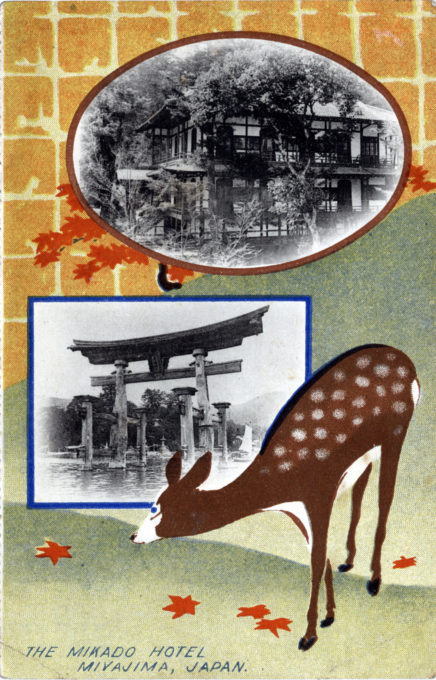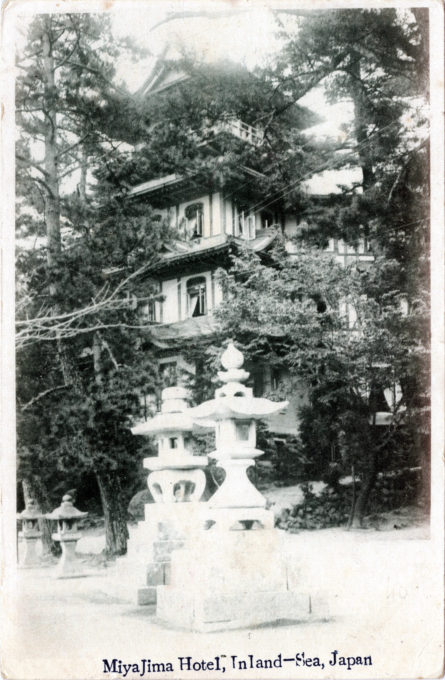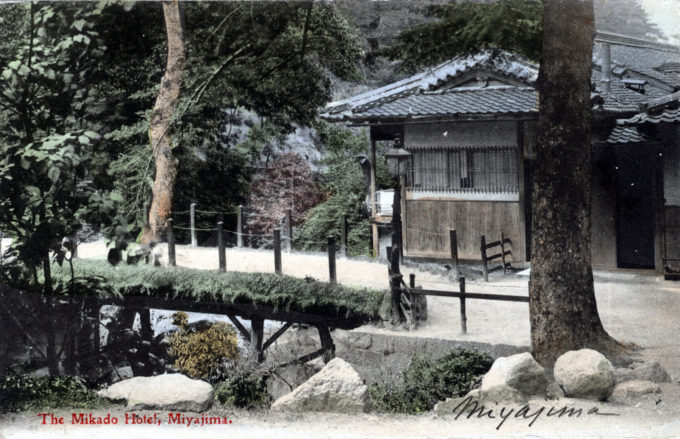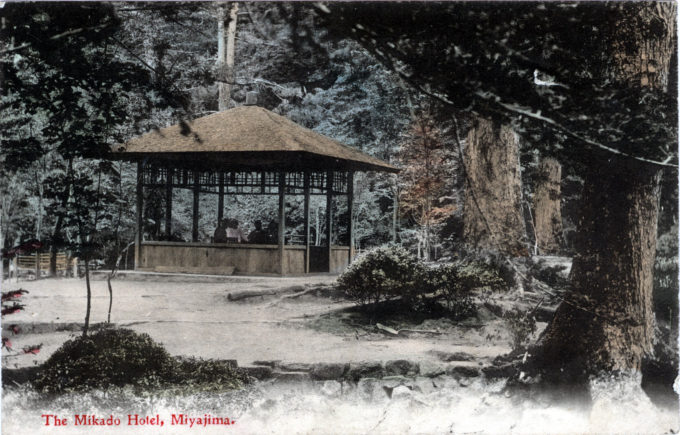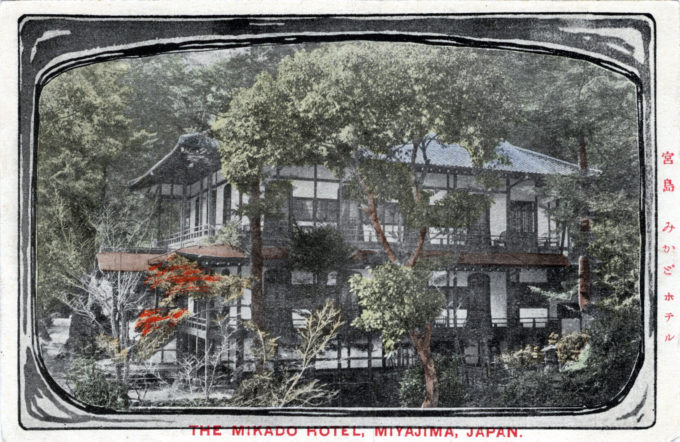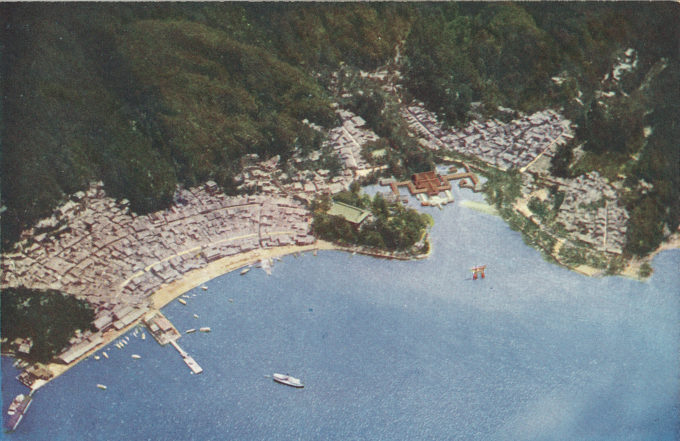See also:
The Big Torii from Matsubara, Itsukushima, Aki, c. 1910
“The approach to Miyajima as we crossed the lake gave us a fine first impression – the great torii standing boldly forth from its watery base; the stone lanterns in the foreground; the temple seen dimly through the green and the thickly wooded hills in the background all added greatly to the landscape.
“At our right on an eminence was situated the Mikado Hotel, which was to shelter us, and which we later found to be an ideal abiding place.”
– Travels in the Far East, by Ellen M. H. Peck, 1909
“We were glad to leave the train when Miyajima station was reached at half past eight. A boy from the Mikado Hotel was waiting to meet us, a sail of fifteen minutes took us to the island where, as no jinrickishas are allowed and we did not want to walk over a mile in the dark, we embarked again – this time in a rowboat – and were landed on a beach where several Japanese with paper lanterns were waiting to guide us through the woods to the little house that had been prepared for us.
“The two rooms had foreign furniture and I was so glad to see a real bed again. A laughing little dumpling of a maid brought us tea and hot water. I was delighted when I emerged in the morning to find that our little house was perched on the bank of a pretty little brook surrounded by a fairy land of woods. There were more dainty little houses near by, which, with the larger house where the meals were served, made up the Mikado Hotel.
“Art and Nature combined to make the place fascinating. There were fountains, tiny lakes with gold fish, charming walks along the seashore or through the woods, and tame deer and doves that came to eat from our hands.”
– Round the World in Silence, by Annabelle Kent, 1911
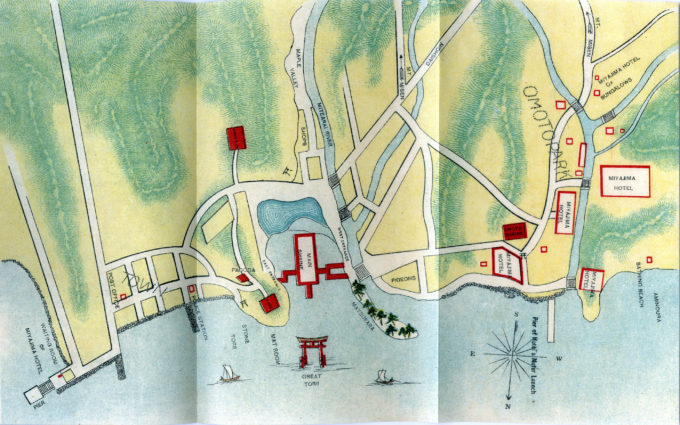
Map of Miyajima, depicting the Great Torii (lower center), Itsukushima Shrine, and the sprawling grounds of the Miyajima Hotel (at right). [Source: A Short Guide to Miyajima, Miyajima Hotel, 1913.]
“The Miyajima Hotel, formerly the Mikado Hotel, stands near the beach, at the entrance to the Omoto Park, in a beautiful spot opposite the mainland. The sea breezes, fountains, running water and deep shade, make it cool in summer and the tree-clad hills shelter it from the cold blasts of winter.
“Guests may stay in the new hotel building, appointed in the most modern style, or in one of the Japanese bungalows scattered about the grounds. These contain from one to six rooms, and are furnished in Japanese or European style. They afford the seclusion of home, combined with the excellent service of a good hotel.”
– A Short Guide to Miyajima and Neighborhood, Miyajima Hotel, c. 1920
- Garden path, Mikado Hotel, Miyajima, c. 1910.
- Gazebo under the forest canopy, Mikado Hotel, Miyajima, c. 1910.
- Mikado Hotel, Miyajima, c. 1910.
“My favorite of all places visited in Japan is Miyajima on the Inland Sea. While the hotel is not the last word in modernity, I think it is not unpleasing and I have my misgivings when I am told that they are going to demolish it and replace it with a modern hotel on European lines.
“Two small – or at least they are so often so regarded – things added not a little to my complete and perfect enjoyment of Miyajima, one of the world’s loveliest spots. One was the most appetizing breakfasts I ate in Japan, due to the touching effort of the manager to please us. The second good omen was the precious quality of the waiter at that breakfast – and other meals. His ingenuous curiosity and solicitude after my health, comfort and well-being warmed the cockles of my heart. He purred around me and got me to purring too. He was priceless. He thoroughly enjoyed my enjoyment. There ought to be rewards to perfect servants who produce satisfied clients. Hotels should see to it.”
– “The Inns and Outs of Japan”, by Henry Albert Phillips, Japan Overseas Travel Magazine, January 1931


